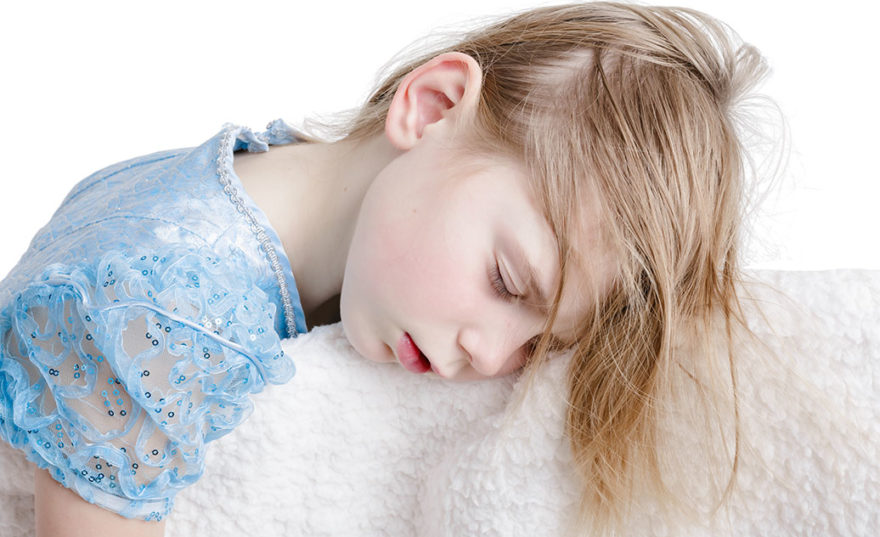Cortical hyperarousal can be inferred from high-frequency (beta) electroencephalogram (EEG) activity during nonrapid eye movement (NREM) sleep. This hyperarousal is regarded as an underlying mechanism of insomnia persistence,1 as cross-sectional studies have shown that increased beta EEG activity during NREM sleep is associated with insomnia.2
Now, Julio Fernandez-Mendoza and colleagues have conducted the first developmental study to examine whether increased beta EEG activity in childhood precedes the onset of pathological insomnia symptoms in adolescence. The study included a case-control subsample of the Penn State Child Cohort, consisting of 45 children aged between 6 and 11 years.
These children were monitored for low (15-25 Hz) and high (25-35 Hz) beta EEG activity during NREM sleep and were then followed 8 years later as adolescents. The data showed that childhood high-beta EEG activity during NREM sleep was associated with a threefold increased risk of developing insomnia symptoms in adolescence compared to normal sleeping controls.
The researchers propose that cortical hyperarousal during NREM sleep may thus be a pre-morbid neurophysiological sign of insomnia and an early treatment target in high-risk children.
Study Implications
Clinical practice:
Cortical hyperarousal may serve as an early preclinical marker to detect those at risk of insomnia and associated psychiatric disorders. Cortical hyperarousal may have a role in the increased risk for the development of depression associated with insomnia as early as adolescence or even childhood. As such, novel treatments to prevent insomnia and associated psychiatric morbidity should target cortical hyperarousal in high-risk children.
Recommendations for further science:
The researchers propose that large longitudinal cohorts with a developmental design are needed to replicate the study findings and confirm that cortical hyperarousal during NREM sleep can serve as a preclinical marker to detect those at risk of chronic insomnia phenotypes and associated psychiatric disorders. Such studies should combine multiple sources of data from the sleeping brain.
Future studies should also investigate the longitudinal association between sleep EEG activity in childhood and psychopathologic outcome sin adolescence and early adulthood.
Mendoza-Fernandez, J. Li, Y., Fang, J., Calhoun, S.L., Vgontzas, A.N., Liao, D. & Bixler, E.O. (2018,) Childhood high-frequency EEG activity during sleep is associated with incident insomnia symptoms in adolescence. J Clin Psychol Psychiatr. doi:10.1111/jcpp.12945.
Further reading:
1Bonnet, M.H. et al. (2010), Hyperarousal and insomnia: State of the science. Sleep Med. Rev. 14: 9-15. doi: 10.1016/j.smrv.2009.05.002.
2Riemann, D. et al. (2010), The hyperarousal model of insomnia: A review of the concept and its evidence. Sleep Med. Rev. 14: 19-31. doi:10.1016/j.smrv.2009.04.002.
Glossary
Nonrapid eye movement (NREM) sleep: a collection of three sleep stages during which there is little-to-no eye movement, dreaming is rare and the muscles are not paralyzed. Stage 1 of NREM sleep occurs in the beginning of sleep and the state is referred to as relaxed wakefulness. In stage 2, EEG recordings show short bursts of high-frequency brain activity, known as “sleep spindles”. Stage 3 is a deep sleep, known as slow-wave sleep.
Cortical hyperarousal: fast electroencephalographic (EEG)-defined cortical activity.
